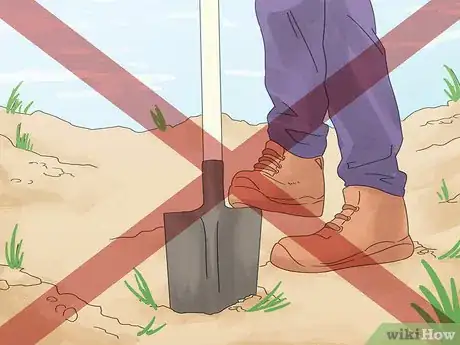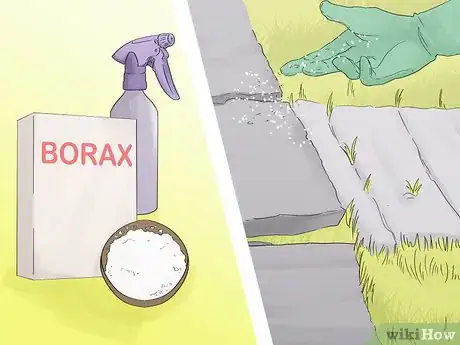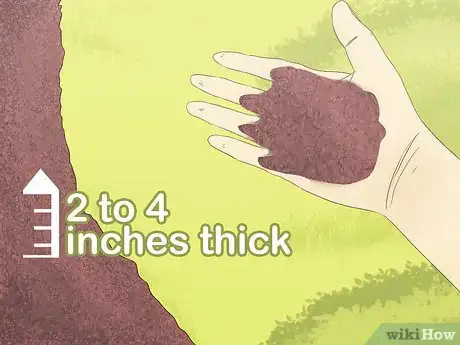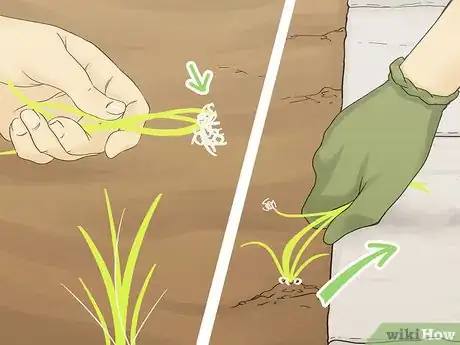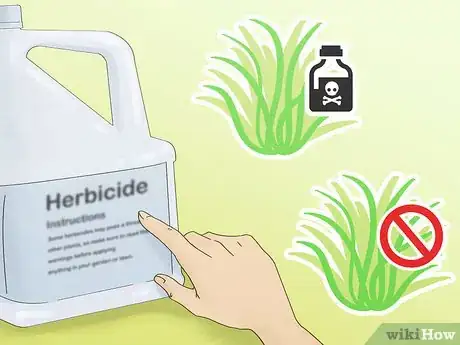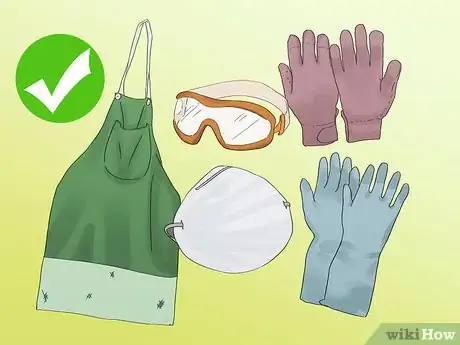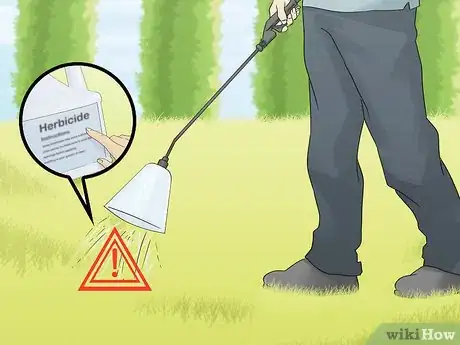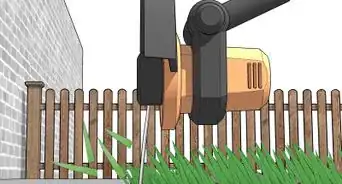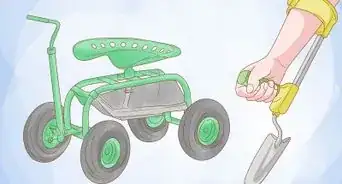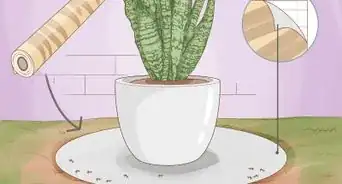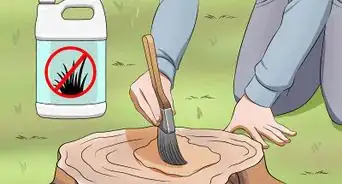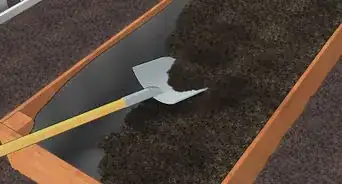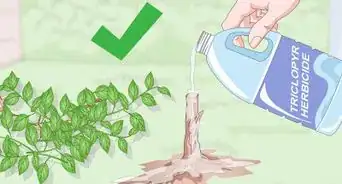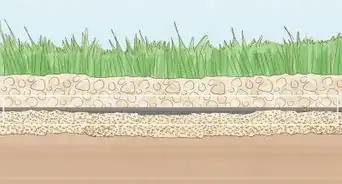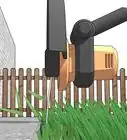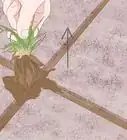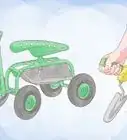This article was co-authored by Scott Johnson. Scott Johnson is the Owner and Lead Design Consultant for Concrete Creations, Inc., an award-winning landscape and design company based in the San Diego, California metro area. He has over 30 years of experience in the pool and landscape construction industry and specializes in large estate outdoor environment construction projects. His work has been featured in San Diego Home & Garden Magazine and on Pool Kings TV Show. He earned a BS degree in Construction Management with an emphasis in Architecture and CAD design from Northern Arizona University.
There are 13 references cited in this article, which can be found at the bottom of the page.
This article has been viewed 66,687 times.
Weeds are the unwanted plants that grow in our garden or lawn. Weeds typically have an abundant seed production, are resilient, and can spread at a high rate. Worldwide, there are approximately 8,000 species of weeds, which can make it incredibly hard for you to keep your garden or lawn free of them. Luckily, by taking precautionary measures and killing weeds at their source, you can keep your garden and lawn weed free.
Steps
Preventing Weeds From Growing
-
1Refrain from disturbing the soil. Heavy digging and cultivation can cause weed seeds to come to the surface and begin growing. Only disturb the soil when you have to, so that you don’t inadvertently raise weed seeds.[1]
-
2Sprinkle weed prone sidewalks with salt. If you are having an issue with weeds growing in between cracks in a walkway or sidewalk, try using salt to prevent future weed growth. Be warned that salt will also kill other vegetation in the area, so make sure to use it only in spots that are weed prone.Advertisement
-
3Maintain a thick and healthy lawn. Weeds like to grow in open areas that are abundant in nutrients and minerals. You can prevent them by maintaining a thick and healthy lawn that has grass and other lawn plants to compete with weeds that may want to grow in the area.
Using Cultural Controls
-
1Use mulch to smother the weeds. Smothering weed seeds with mulch will hinder their germination and could prevent them from growing all together.[8] Keep your garden or lawn area well mulched in order to prevent weed growth.
- Spread the mulch 2 to 4 inches deep to retain moisture and to stop weed growth.
- Organic mulches like hardwood mulch, shredded bark, pine needles and straw degrade over a couple of months and can provide additional nutrition to your soil.[9]
- Another mulching technique is to turn the soil, water it, allow weeds to spout, then stake down a heavy black tarpaulin over the area. The black color of the tarp causes the ground beneath to heat up in the sun and kills the weeds. After a couple of weeks the ground will be sterilized.
-
2Pull visible weeds in your garden. Pulling weeds from the ground with your hands is the simplest way to rid your garden or lawn of unwanted weeds. Identify weeds as they grow and pull them. You can also opt to sever the roots of the weeds with a knife by stabbing the dirt under the weed where the roots are.[10]
- Weeds are easier to pull when the soil is moist.
- A single dandelion can create 15,000 seeds in a single year, which may lead to additional weeds in your garden. Pull or sever the weeds when they’re young before they can create more seeds.[11]
-
3Hoe or till your lawn. If there is already weed growth in your garden, tilling or hoeing the weeds will uproot smaller annual weeds while severing the flowers off perennial weeds. Once you are done tilling or hoeing, discard the weeds and use mulch to prevent seeds from sprouting new ones.[12]
- If you do not have weed growth, refrain from tilling or hoeing your garden or lawn, as this can activate dormant weed seeds under the soil.
-
4Make a natural weed killer. You can also make your own natural weed killer to help keep weeds at bay. To make a natural weed killer, combine one gallon of white vinegar with one cup of salt and one tablespoon of liquid dish soap. Mix the ingredients well and apply the mixture to weeds during the sunniest part of the day. This is when the natural weed killer will be most effective.
Using Chemical Controls
-
1Identify the weeds that you have. Herbicides can be used to chemically control or kill weeds in your garden or lawn, but are typically species specific to the weeds that you have.[13] Before purchasing a herbicide, refer to online encyclopedias to identify the type of weeds that you have.
-
2Read and follow the directions on the label of the herbicide. Before applying herbicide to any weeds in your garden, it’s important that you read the directions and the label on the box it came with.[16]
- Some herbicides may pose a threat to other plants, so make sure to read the warnings before applying anything in your garden or lawn.
- You should also determine if the herbicide is made for weed prevention, or for killing weeds once they are grown.
-
3Wear protective gear before applying the chemicals. Wearing things like an apron, rubber gloves, protective eye-wear, and a face-mask will protect you from any herbicides that may inadvertently get on you.
- Tyvek and nitrile gloves are the best material to use when handling herbicide and can be bought in hardware stores or online.[17]
-
4Spray the herbicide to weeds and weed prone areas. Do not douse an area with herbicide, even if it has a lot of weeds, as this could be dangerous. Use the recommended level of herbicide according to the label.
- You can visit a local cooperative extension if you have additional questions about applying herbicide to your garden or lawn, or having trouble choosing the correct chemical for the types of weeds that you have.[18]
Expert Q&A
-
QuestionHow can I control weeds coming in between my pavers?
 Scott JohnsonScott Johnson is the Owner and Lead Design Consultant for Concrete Creations, Inc., an award-winning landscape and design company based in the San Diego, California metro area. He has over 30 years of experience in the pool and landscape construction industry and specializes in large estate outdoor environment construction projects. His work has been featured in San Diego Home & Garden Magazine and on Pool Kings TV Show. He earned a BS degree in Construction Management with an emphasis in Architecture and CAD design from Northern Arizona University.
Scott JohnsonScott Johnson is the Owner and Lead Design Consultant for Concrete Creations, Inc., an award-winning landscape and design company based in the San Diego, California metro area. He has over 30 years of experience in the pool and landscape construction industry and specializes in large estate outdoor environment construction projects. His work has been featured in San Diego Home & Garden Magazine and on Pool Kings TV Show. He earned a BS degree in Construction Management with an emphasis in Architecture and CAD design from Northern Arizona University.
Landscape & Design Consultant The big thing is you need to keep pavers sealed on a yearly basis. You should stick with a maintenance program where you reseal your pavers every year in the fall or before spring, just before it starts raining. Remove all of the weeds and then use a sealant to fill in the gaps between the pavers. That will keep water out of the sand under your pavers, which will keep the weeds from growing.
The big thing is you need to keep pavers sealed on a yearly basis. You should stick with a maintenance program where you reseal your pavers every year in the fall or before spring, just before it starts raining. Remove all of the weeds and then use a sealant to fill in the gaps between the pavers. That will keep water out of the sand under your pavers, which will keep the weeds from growing. -
QuestionHow are weeds harmful to the crop?
 Maggie MoranMaggie Moran is a Professional Gardener in Pennsylvania.
Maggie MoranMaggie Moran is a Professional Gardener in Pennsylvania.
Home & Garden Specialist Weeds will steal nutrients and water that the other plants can use. Certain weeds will actually release a chemical that will harm crops near the weed.
Weeds will steal nutrients and water that the other plants can use. Certain weeds will actually release a chemical that will harm crops near the weed. -
QuestionWhy should we take out weeds from the fields?
 Maggie MoranMaggie Moran is a Professional Gardener in Pennsylvania.
Maggie MoranMaggie Moran is a Professional Gardener in Pennsylvania.
Home & Garden Specialist Weeds reduce water and nutrients from the soil that the planted harvest could use.
Weeds reduce water and nutrients from the soil that the planted harvest could use.
References
- ↑ http://www.finegardening.com/six-tips-effective-weed-control
- ↑ https://www.houselogic.com/by-room/yard-patio/how-to-prevent-weeds/
- ↑ http://www.networx.com/article/11-ways-to-control-weeds-without-chemica
- ↑ http://plantscience.psu.edu/research/centers/turf/extension/factsheets/weed-management/chemical-weed-control
- ↑ http://www.bhg.com/gardening/pests/insects-diseases-weeds/winning-the-weed-war/#page=0
- ↑ http://www.networx.com/article/11-ways-to-control-weeds-without-chemica
- ↑ http://www.networx.com/article/11-ways-to-control-weeds-without-chemica
- ↑ https://hort.purdue.edu/ext/HO-217.pdf
- ↑ https://www.houselogic.com/by-room/yard-patio/how-to-prevent-weeds/
- ↑ http://www.finegardening.com/six-tips-effective-weed-control
- ↑ https://hort.purdue.edu/ext/HO-217.pdf
- ↑ https://mantis.com/win-over-weeds/
- ↑ http://ipm.ucanr.edu/TOOLS/TURF/PESTS/herbclass.html
- ↑ http://www.ncbi.nlm.nih.gov/pubmed/11401272
- ↑ http://ipm.ucanr.edu/PMG/PESTNOTES/pn74113.html
- ↑ http://www.environment.gov.au/biodiversity/invasive/weeds/management/chemical-control.html
- ↑ http://www.invasive.org/gist/products/handbook/07.herbicideguidelines.pdf
- ↑ http://npic.orst.edu/pest/weeds.html
